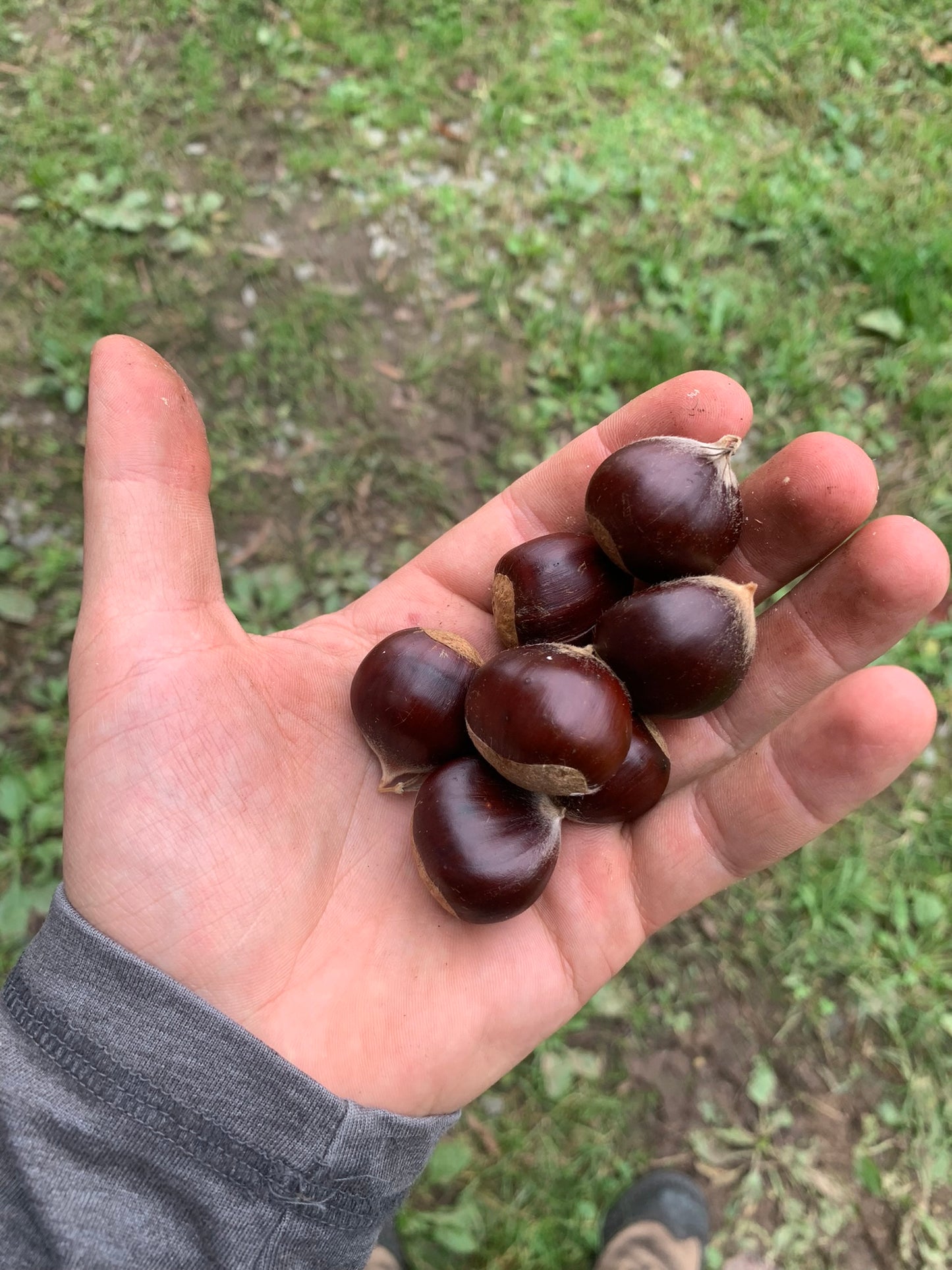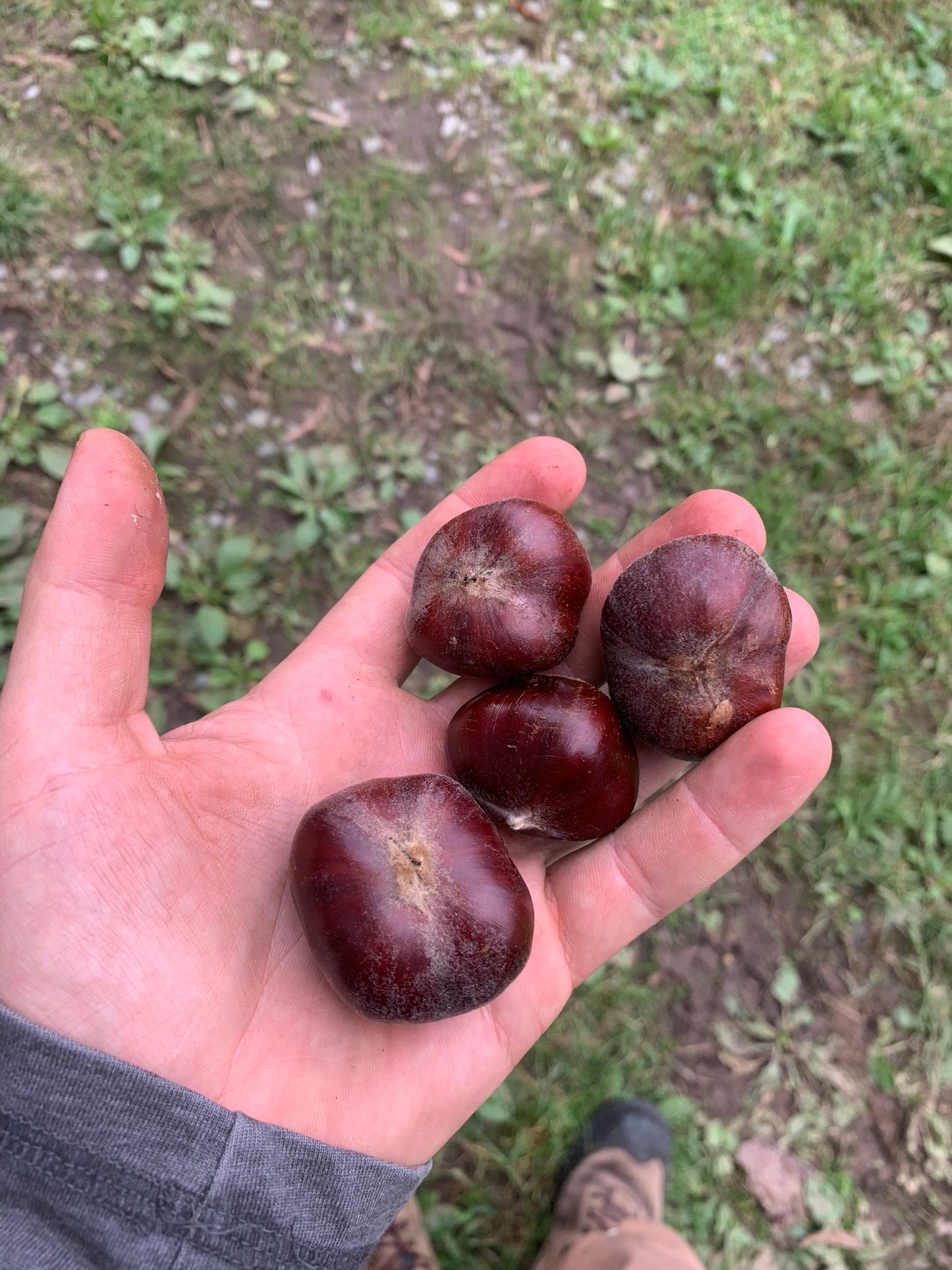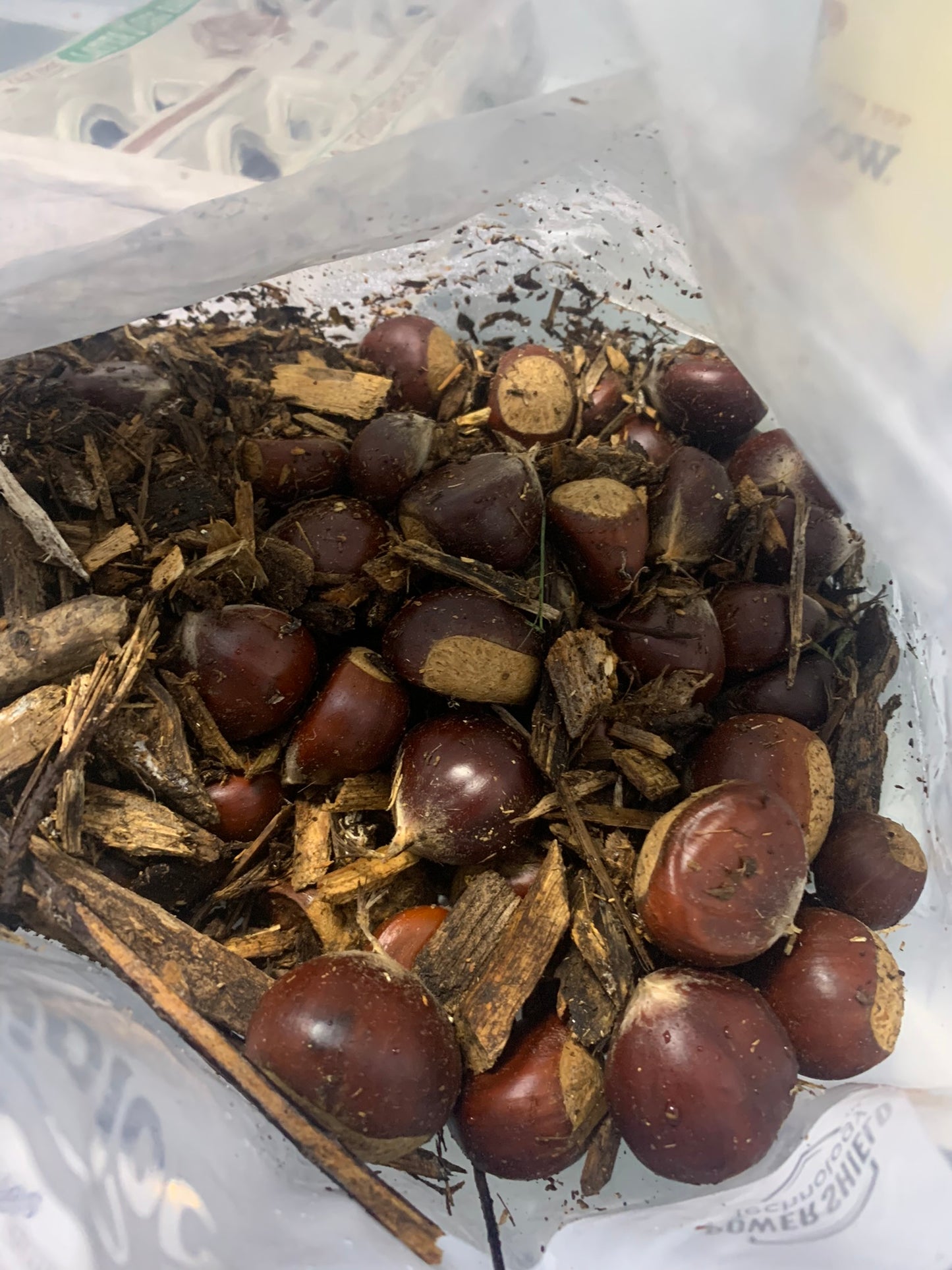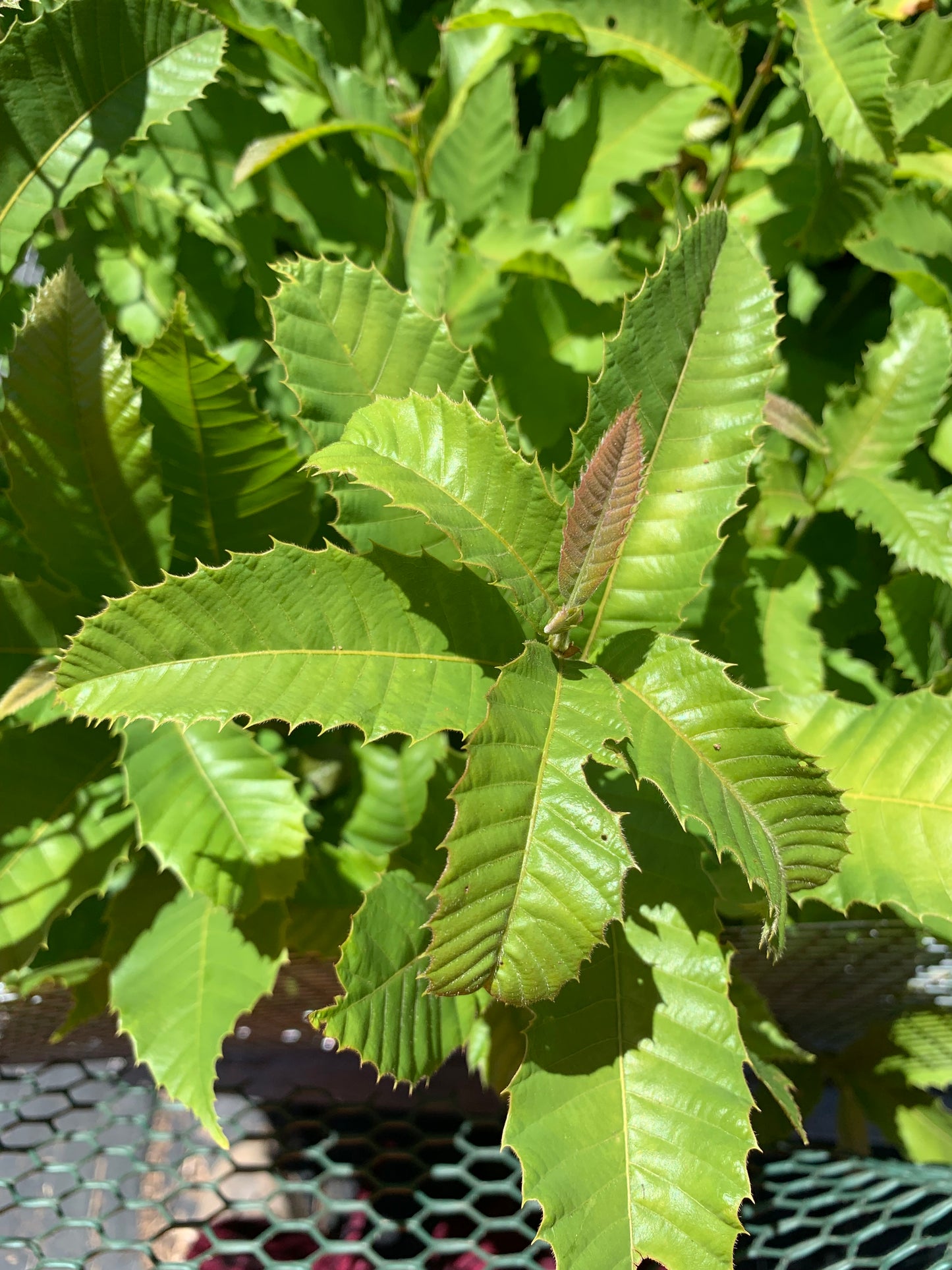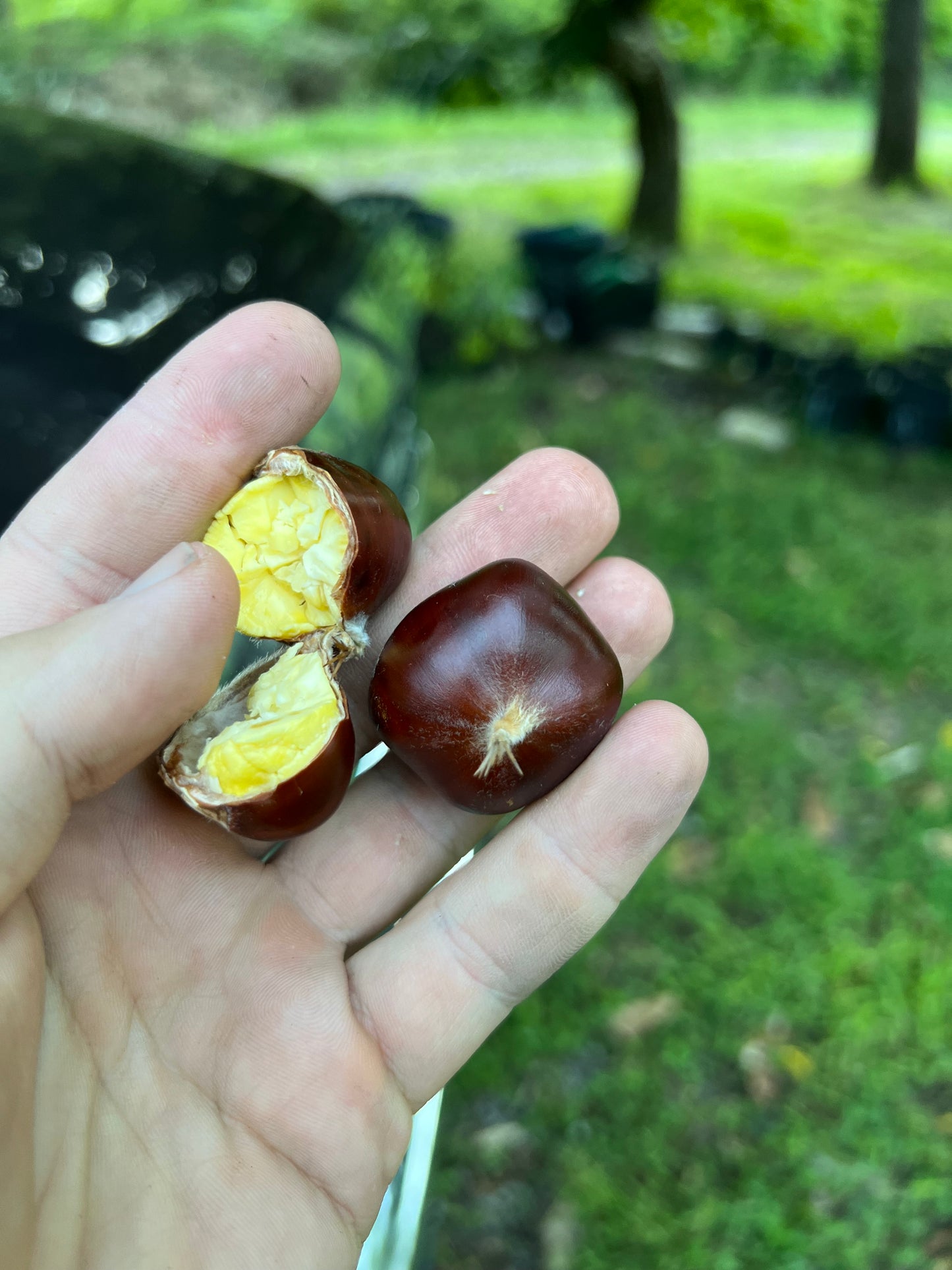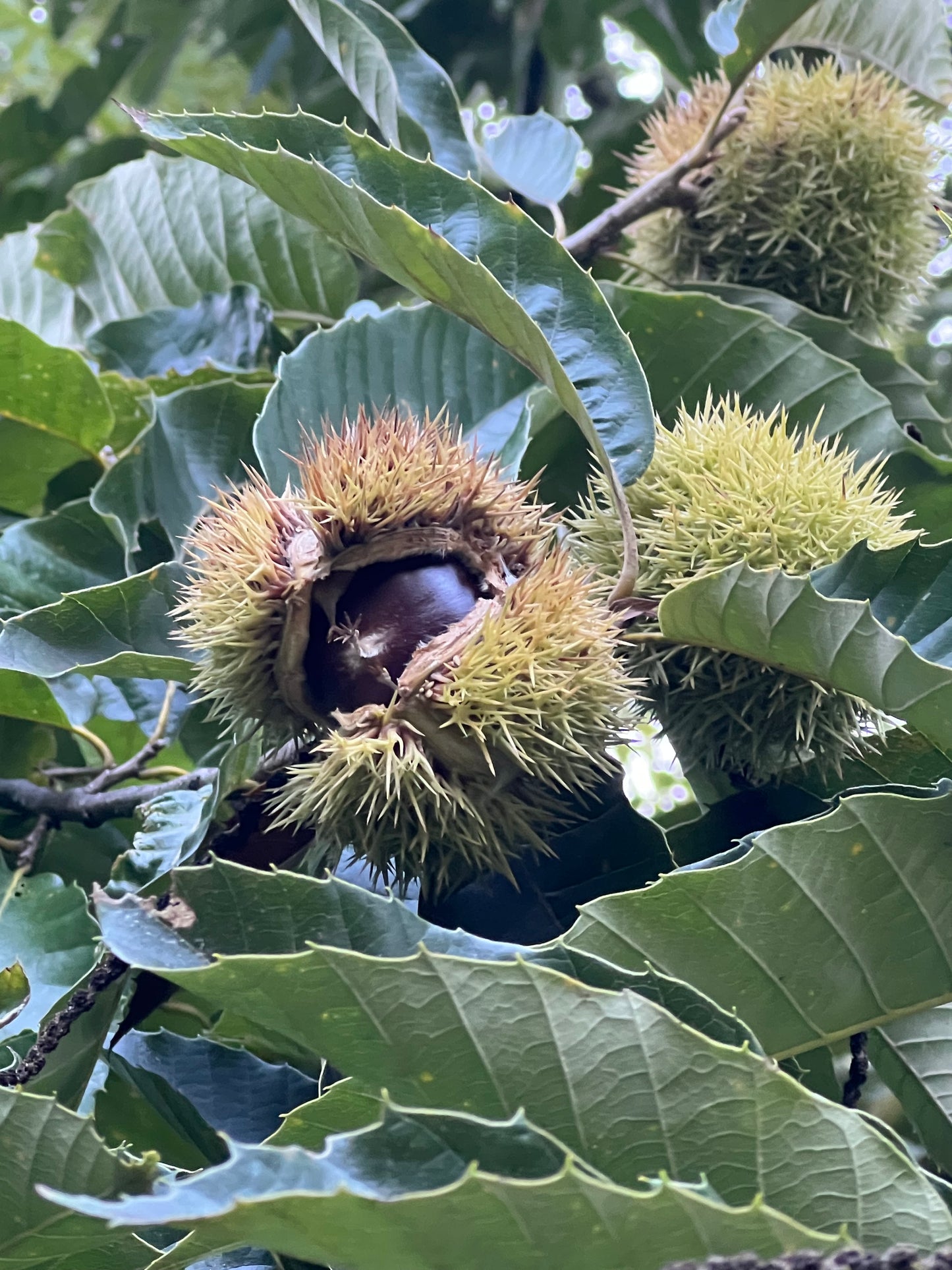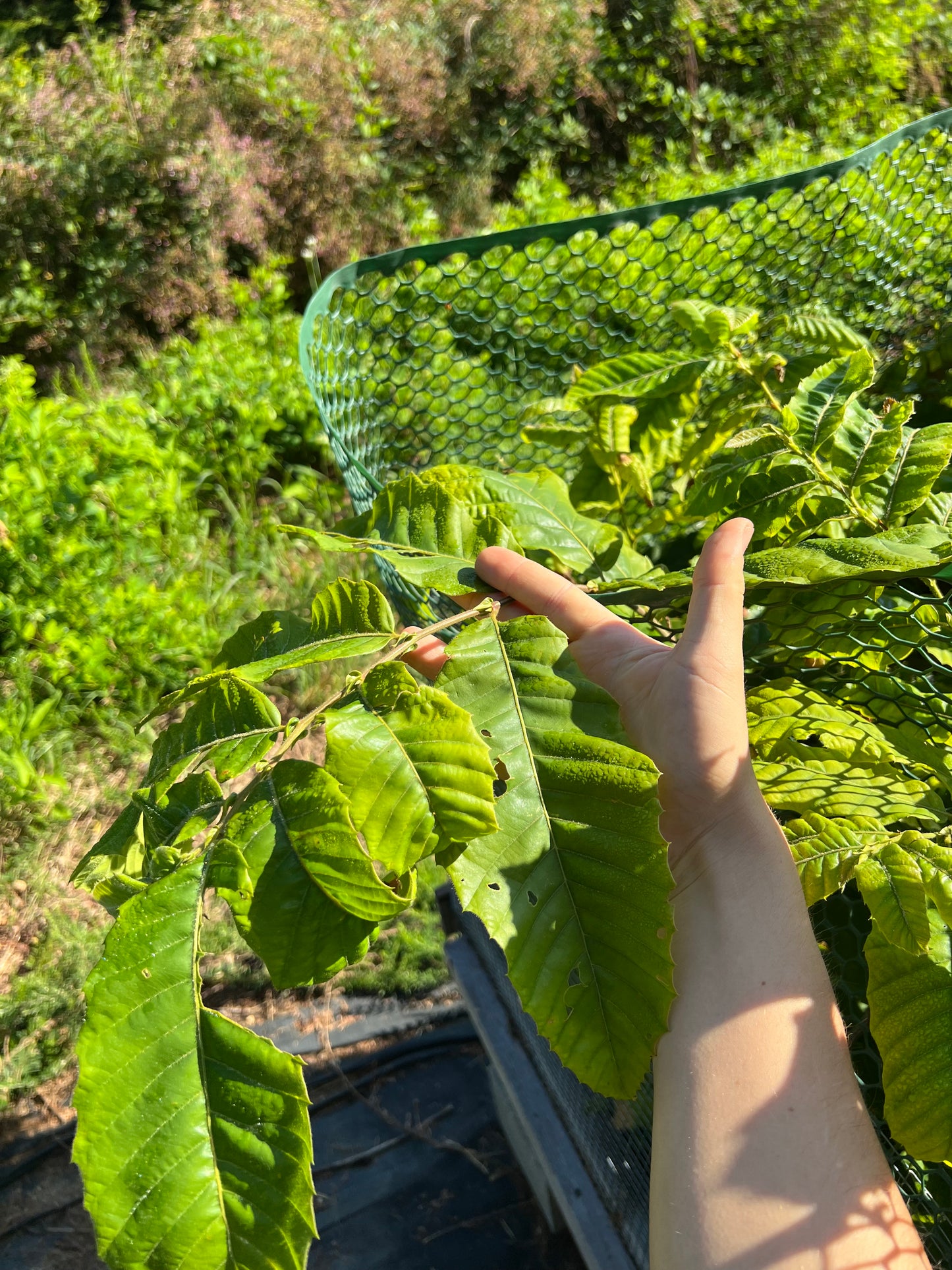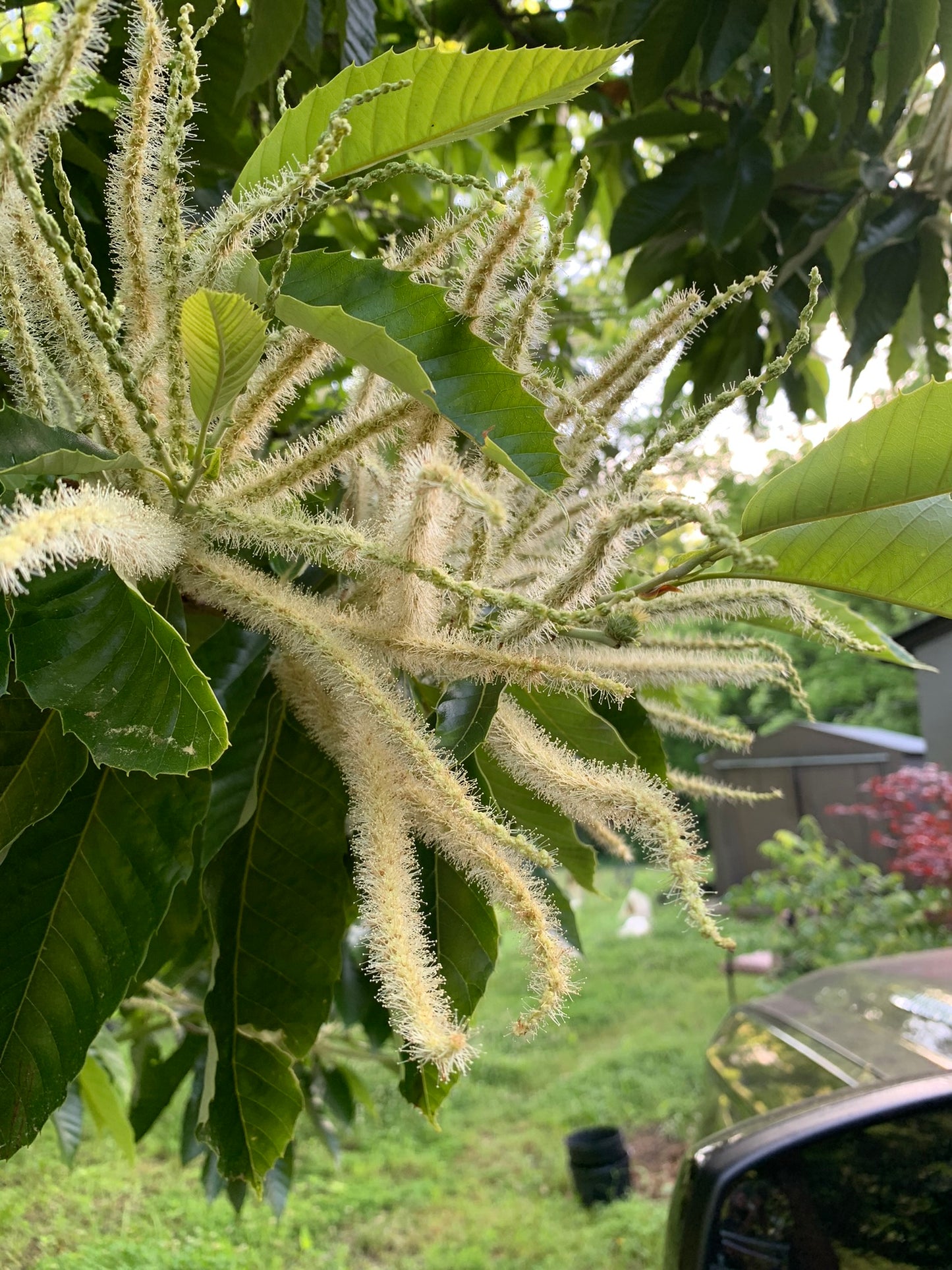Living Soil Tree Farm
Chestnut
Chestnut
Couldn't load pickup availability
Chestnut (Castanea)
We do not ship Chestnuts to CA, WA, OR, FL, LA due to quarantine restrictions
Chestnuts play a special role ecologically. While most nut trees on the east coast have a tendency to bare nuts on alternating years (sometimes taking more than one year off in-between big crops) chestnuts tend be produce a reliable crop annually. This makes chestnuts an incredibly important food source for a wide range of animals, including humans. From squirrels to bear, blue jays to humans, it is hard to find an animal who does not value the chestnut as a food source. Insects also rely on chestnut leaves and pollen as a food source.
Chestnuts can grow into large and very long lived trees. Their wood is easy to work with and is extremely rot resistant. They need well draining soil but can handle steep slopes and some drought conditions once established. The nuts can be eaten raw, roasted, or ground into flour. In clay soils we recommend planting chestnuts up on mounds to improve drainage.
There are several different species of chestnuts from different parts of the world as well as hybrids between these species. In the US trees of mostly Asian decent are commonly planted. For nut production Asian or hybrid trees are desired due to the presence of a blight which will kill most American chestnuts before they are able to produce a significant crop (more on that below). Many cultivars of chestnuts exist although often growers prefer to plant seedlings trees. Seedlings are cheaper than grafted trees. When sourced from quality parents seedlings will often express valuable characteristics such as nut size and productivity. Chestnut grafts are sometimes susceptible to failure before the tree reaches a mature age. The causes for this are not well understood but this is one more reason to consider seedlings trees.
Chestnuts are a diverse family of trees. Some chestnuts such as chinquapin chestnuts are small (both the tree itself and nuts), while others like the American chestnut and some Asian lines grow to be HUGE tall towering trees. Generally American chestnuts produce small nuts. Different Asian chestnut populations have been breed in different directions, some make small nuts but make make large nuts. Most of the Asian chestnut trees brought to the US are orchard style trees. These trees grow short but wide and make large nuts well suited for human consumption. Not all trees are created equal. All chestnut trees will make food but their overall productivity, nut size, and taste can vary widely. Seedling chestnut trees will usually show similarities to their parents so picking good genes for your planting is highly important.
Here on the east coast the native American Chestnut was once a dominant forest tree from Florida to Maine. In the early 1900s a blight was accidentally imported from China which quickly devastated chestnut populations on the east coast. Prior to the blight American chestnuts accounted for 25% of the canopy within their range, in some areas stands of chestnut made up 50% or more of the canopy. These native trees were called the red woods of the east due to their truly massive size. The eastern Woodlands was an almost unimaginably different scene when these giants ruled the canopy.
Since the arrival of the blight American Chestnut was nearly wiped out and is now considered functionally extinct. Although the blight played a large role in this downfall it is important to note two other factors.
First that the forests of the east coast had already been dramatically altered prior to the introduction of the blight. Clear cutting for timber and farmland had taken place over vast stretches of forests since the arrival of Europeans. This combined with the forced removal of native peoples who played a vital role in these ecosystems caused ecological damage to our forest systems that are difficult to calculate and understand. The number of ecological changes that European settlers inflicted is mind boggling.
Second it is important to note that once the blight arrived land owners were advised to remove 100% of their chestnut trees immediately so as to extract monetary value before the trees died. Some folks (myself included) believe it is inevitable that some trees in the population would have shown some blight resistance but were never given a chance due to shortsighted and greedy logging practices.
Despite all that there is hope. Small populations of pure American chestnut trees remain alive. Some have been found on the east coast in their native range and others remain that were planted out west where the blight is unable to survive. Trees in the west make lots of seed and east coast populations are able to make some seed before the blight kills the stems. Chestnut root systems are not impacted by blight meaning the trees usually resprout after blight impacts the stems.
Seed from these populations are being planted by individuals and organizations. Although many will perish, some of these seedlings may eventually show resistance to the blight. There is also ongoing breeding work to hybridize American chestnut with other Asian species who have more resistance to the blight. In some shape or form the American Chestnut will remain alive and eventually increase its presence on the land again.
To a lesser extent the European chestnut also suffered when the blight reached its range. Similar breeding efforts are underway in Europe as well however European forests have had help from a virus. This virus evolved to target the blight itself and where the virus is present chestnut trees are often able to survive the blight. This virus was brought to America but our blight populations have mutated so many times that the virus is usually ineffective.
2025 Selections:
Perfect Circle Farm "red lines"
Buzz Ferver of Perfect Circle farm in Vermont has a deep passion for chestnuts. Buzz has planted many chestnuts on his farm, both seedlings & grafted trees. Additionally Buzz is well connected in the chestnut world and often travels to some of the best orchards around to collect seed. Of all the seed that Buzz offers through his farm we purchased several selections that came from trees with red burs and leaves. I really love when plants express red colors for some reason. The parent trees this seed came from also make high quality nuts for human consumption. Specifically we grew out seed from the following mother trees as described by Buzz, "RR Uber productive Liu seedling NW corner", "RR New Favorite Liu Seedling -25 seed", & "Liu seedling with pink burs"
2024 Selections:
Asian seedlings - BARE ROOT
This seed was gathered from various large and healthy trees near Hillsborough NC. Many of these trees are likely remnants of old homesteads. In the aftermath of the blight Asian chestnuts were widely planted as a source of food all across the east coast. All seedlings in this selection come from trees of Asian decent however there are several species native to Asia. We have not been able to identify every chestnut tree we collected seed from down to species. Likely these trees are mostly of Chinese descent with some smaller percentages of other Asian and American genetics possible. What we can say definitively is that these mother trees are surviving and producing nuts will minimal care in the piedmont of NC. These trees run a wide range of traits. Some produce rather large nuts while others produce copious amounts of smaller nuts. Many drop free of the bur when ripe.
These trees are roughly 2 feet tall or taller
American - BARE ROOT
Pure American chestnut from a verified tree on the west coast! Most if not all of these trees will be susceptible to the blight. You wont know for sure until you plant them and let them grow. It is very possible that these trees will be able to produce some nuts and pollen to contribute to the next generation of chestnuts before blight overwhelms them. Most will resprout after the blight kills the trunk. These are great for breeding and native restoration but are not recommended for serious nut production due to blight.
These trees are roughly 1 foot tall or taller
Breeders Mix - BARE ROOT
I only have a few trees from this selection for 2024 so get them while they last! Seed for these trees came from cultivar quality mother trees. Most of the seed came from Feralwood Nursery's Red Feather Select. From Feralwood's description "In the area of rural North Carolina where I dwell, chestnuts are a somewhat regular sight, being feral throwbacks of the old homestead life. Of the dozens of chestnut trees I have mapped out and regularly forage from, I select seed annually from a single tree (within a patch of seven). This tree, located at Red Feather Farm and Pottery near the South Mountains in NC, is robust and reliably produces an abundant crop of large chestnuts. The yields on this tree, which is estimated at more than 70 years old, are astonishing."
These trees are roughly 2 feet tall or taller
Materials
Materials
Shipping & Returns
Shipping & Returns
Dimensions
Dimensions
Care Instructions
Care Instructions
